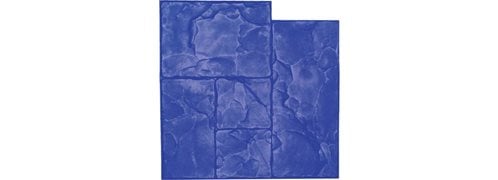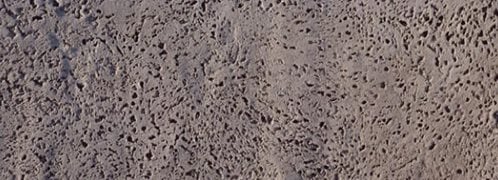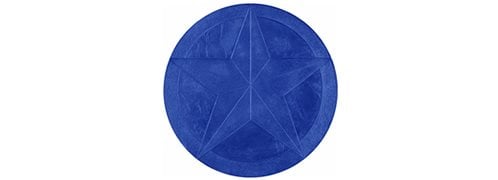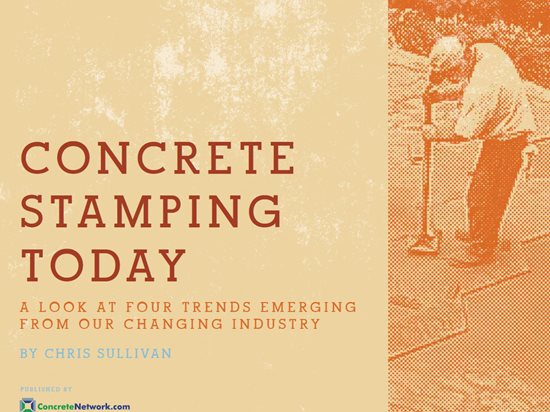- Concrete Stamps
- Get the Look - Stamping Pictures
- Buying Tips for Concrete Stamping Tools: Advice that will help you make smart choices
- Concrete Stamp Cost
- Types of Concrete Stamps: A comparison chart of popular stamps & patterns
- Stamping & Texturing Tools
- Concrete Stamp Mats
- Concrete Texturing Skins
- Medallion Stamps
- Texture Rollers
- Step Forms & Liners
- Installing Stamped Concrete
- How to Stamp Concrete
- Coloring Stamped Concrete
- Concrete Stamp Release Agent
- Sealers for Stamped Concrete
Trends in Sealers for Stamped Concrete
Matte finishes, prized for their natural look, are gaining popularity over high-gloss sealersThis is an excerpt from the new e-book “Concrete Stamping Today,” part of a series of reports from ConcreteNetwork.com on trends and insights about decorative concrete applications.
Free E-book:
Concrete Stamping Today
Discover four emerging trends in concrete stamping from ConcreteNetwork.com’s new e-book. You’ll also get insights and advice from veteran installers that will help you stay profitable in today’s market.
Download Concrete Stamping Today (PDF)
Let’s face it, no matter the products used or the process employed to install stamped concrete, the final result is all that really matters to those writing the check. Aside from coloring and texturing systems, the product that has the biggest influence on the final look of stamped concrete is the sealer. If we look at stamped concrete over its 50-year life, the predominate trend has been the use of high-gloss, or “wet-look,” sealers. These products enhance and darken the color of stamped concrete, but they sometimes give the surface an unnatural glazed-donut appearance.
Today, we are finding that installers are getting smarter, and clients are asking for more realistic and natural looking hardscapes. “I hardly ever get any customers asking for a gloss look any more,” says C.J. Salzano of Salzano Custom Concrete, Centreville, Va. “The trend is matte or a no-gloss look, very natural. After all, aren’t we trying to simulate natural stone? I don’t know many stones that are naturally glossy.”
The use of high-gloss sealers is also a leading cause of sealer failures. Applicators are getting tired of the callbacks, and in recent years, they have started moving away from high-gloss sealers to those with a lower solids content. The problem with a higher solids content is that it makes a sealer less able to penetrate the concrete surface, thus requiring additional surface profiling to promote good adhesion. It also doesn’t allow for moisture vapor to move out of the concrete, and it's important that sealers used on exterior concrete allow the passage of both air and moisture.
You can find sealers on the market today that provide color enhancement without producing a wet or glazed appearance. These new-generation sealers for stamped concrete can be found in both solvent- and water-based versions, and they are starting to become more widely accepted in the industry. Another new trend is the use of penetrating sealers, which were rarely used on stamped concrete in years past. Now they are starting to gain mainstream acceptance. These sealers, which include silanes, siloxanes, and silicates, penetrate into the concrete to form a chemical barrier that shields against moisture penetration and deicing chemicals.
Related resources:Buyer's Guide to Concrete Sealers
Driveway Sealers for Concrete
Fixing Common Sealer Problems: Expert Tips
 Ashlar Cut Slate Stamp
Hand-tooled with a pronounced texture
Ashlar Cut Slate Stamp
Hand-tooled with a pronounced texture
 Herringbone Used Brick
Tool Size is 44" x 27"
Herringbone Used Brick
Tool Size is 44" x 27"
 Rock Salt
Seamless travertine off-set
Rock Salt
Seamless travertine off-set
 Bluestone Texturing Skin
6 skin set - only $1,173.20
Bluestone Texturing Skin
6 skin set - only $1,173.20
 Five Point Star Medallion
Concrete stamp only - $292.00
Five Point Star Medallion
Concrete stamp only - $292.00
 Brickform Stamping Tools
Precision stamping tools
Brickform Stamping Tools
Precision stamping tools





